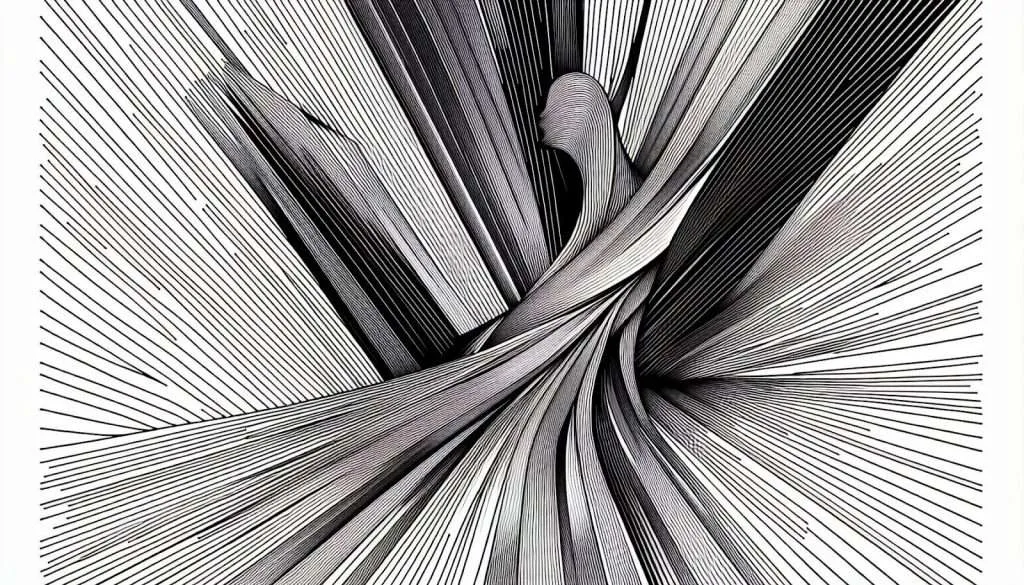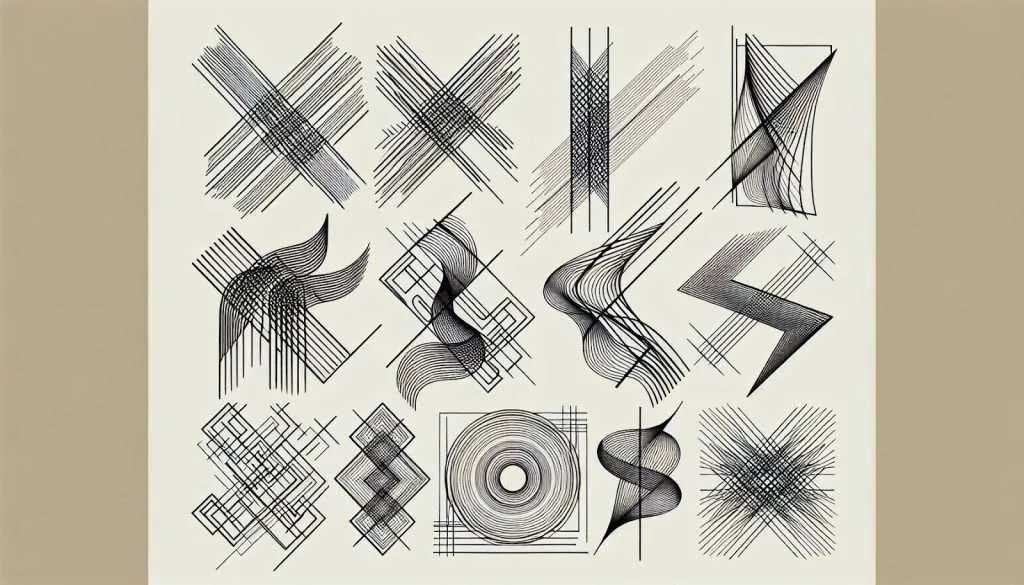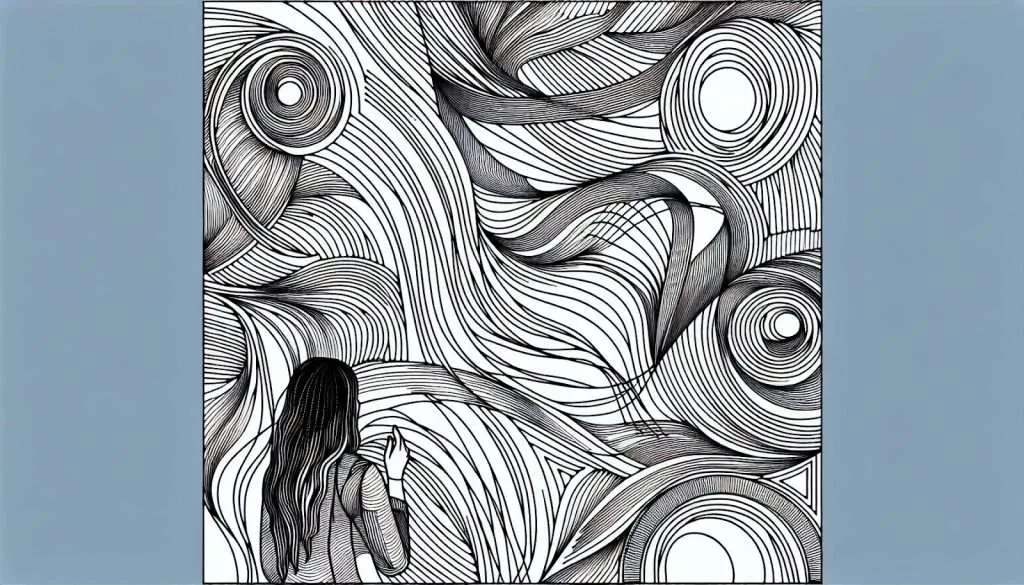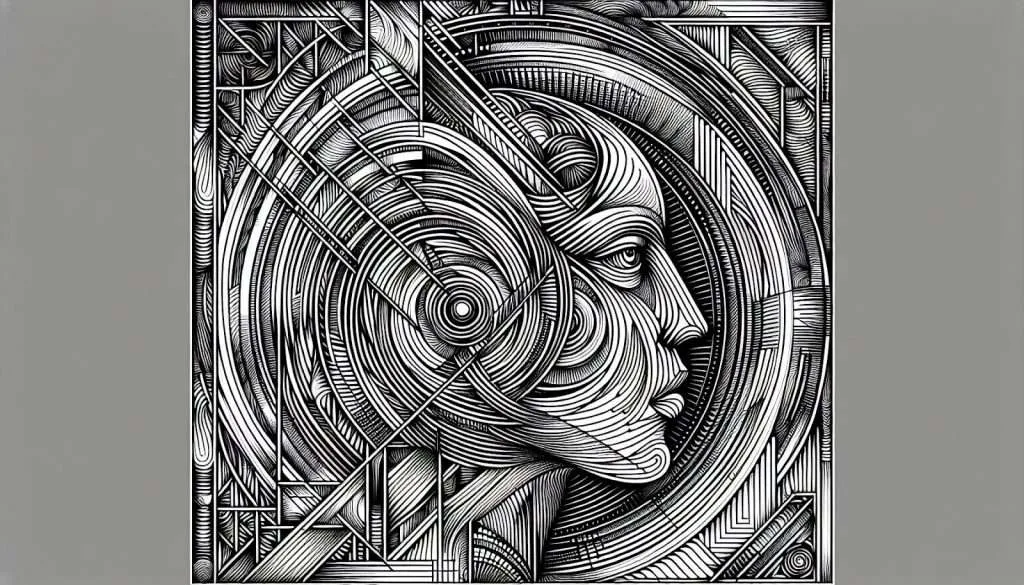
Directional lines in art are key to bringing balance to your art. They guide your eyes and feelings through a picture.
Horizontal lines bring calmness to a piece. They make you feel peaceful and steady.
Vertical lines add strength. They stand tall like trees and give the art power.
Diagonal lines create movement. They make the picture seem alive, like it’s moving. Using different lines can change a picture a lot.
Playing with lines can make your artwork stand out. You get to decide what emotion to show. Thin lines can make things seem far away or delicate.
Thick lines bring things closer or show importance. You see, practicing with lines is fun and helps your art improve. It makes your work more interesting to look at.
Remember, lines are more than just marks on a page. They tell a story and add depth.
Start experimenting with lines in your next piece. You might surprise yourself with what you create.

Directional lines in art are like secret paths. They guide your eyes and feelings as you look at a piece of art.
Diagonal lines are the trick behind the sense of movement in art. They make things look like they’re moving or full of energy.
This movement is key to making art feel alive and dynamic. It pulls you into the scene.
Artists use lines to lead your eyes around their artwork. This is vital in controlling how you experience their creation.
By changing the direction of lines, artists can focus your attention where they want. It’s like being given a map through the artwork.

Lines in art guide your eyes and feelings when you look at a piece. They are necessary to make the artwork pop and get your attention.
An actual line is the one you can see clearly. It makes shapes and outlines stuff in the drawing.
Communicative lines show feelings or actions. They help you understand what the artist wants to say.
Contour lines outline the shape of things. They show details like edges and make the drawing look real.
Curved lines are smooth and bendy. They make art look soft and flowing.
Diagonal lines create a sense of movement. They make pictures look lively and full of action.
Horizontal lines are calm and restful. They make art feel stable and peaceful.
An implied line isn’t drawn but you see it with your mind. It connects points and guides your eyes through the art.
Spiral lines pull your eyes in a circular motion. They add excitement and depth to the artwork.
Vertical lines show strength and height. They make things in the picture seem tall and powerful.

In this article, you’ve been learning about directional lines in art. They help guide your eyes and make feelings pop out in art.
Finding the direction of a line is key to understanding art better. It’s like solving a puzzle where lines show you the way.
To spot the direction, look straight at the line. Turn your head side to side and notice if the line goes up, down, or across. This step is vital. It lets you see the movement in the art, making the picture come alive.
Thin lines can seem far away or delicate. Thick lines feel close or strong. Playing with line weight changes how the art feels. It’s necessary to experiment to see these effects.
When lines curve, they create energy and movement. Think of Van Gogh’s “Starry Night” with its swirling sky. Those spirals pull you into the painting, making it feel alive.
Remember, the direction can guide emotions. Diagonal lines might make you feel action, while horizontal lines are calm. Seeing these lines helps you feel what the artist wanted to share.
In art, every line has a purpose. It’s your job to find that purpose. Be careful and take your time. With practice, you’ll start to see art in a new way.
Line weight is how thick or thin your lines are in a drawing. Different weights can change how your art feels.
You should try using various line weights in your designs. This can make your art look more interesting.
Changing line weight is vital for adding depth to your pieces. It helps show which parts of your drawing are important.

So far, you’ve learned about the power of lines in art. Directional lines guide your eyes and can make art feel more alive.
When you add these lines to your art, they can lead viewers on a journey. They show where to look first and what to see next.
Directional lines are key in making a composition easy to understand. They can point out the most important parts. You get to control the story of your artwork with these lines. They help your audience focus on what you think matters most.
You might not know it, but you’re using directional lines all the time. They’re in the paths, signs, and even in nature. By using them in your art, you make your pieces feel more natural and real. People will find your art more engaging because it feels familiar.
It’s vital to balance these lines well. Too many directions can confuse viewers. Be careful to guide them smoothly from one point to another. This balance keeps your art looking polished and professional.
Remember, every line tells a part of your story. By carefully choosing where these lines go, you shape how people experience your art. Think of them as the paths in a garden. You decide where people walk and what they see.
Directional lines are powerful tools for artists. They help you control the flow and focus of your artwork.
With practice, you’ll get better at using them to enhance your compositions. Remember to keep experimenting and have fun with it.
This part of the article talks about how lines can do more than just outline pictures. They add depth, texture, and shadows, making your drawings look real.
Cross hatching uses lines that cross over each other to show shading. It’s a great way to add darkness and depth where you need it.
This technique can make your drawings pop, giving them a more three-dimensional look. Be careful with the amount of crossing lines; more lines mean darker areas.
Hatching involves drawing lines next to each other without crossing. It creates shading and texture with simplicity.
You can control the lightness or darkness in your drawing by changing how close the lines are. This method is super for adding details and making your artwork come alive.
Shading with line is all about varying the density of lines to show darker or lighter areas. Think of it as painting with lines.
You use more lines where the shadows are and fewer lines where the light hits. This approach is vital for making your drawings look real and full of life. It teaches you to see the world in terms of light and shadow.
Joseph Colella (Joe Colella) is an Editor and Writer at WastedTalentInc. As a frustrated artist with over 40 years experience making art (who moonlights as a certified Business Analyst with over 20 years of experience in tech).
While Joseph holds a Diploma in Information Technology, in true wasted talent fashion he spent years applying for various Art degrees; from the Accademia di Belle Arti (Napoli), to failing to get into the Bachelor of Arts (Fine Arts) at the University of Western Sydney.
While he jokes about his failures at gaining formal art qualifications, as a self-taught artist he has had a fruitful career in business, technology and the arts making Art his full time source of income from the age of 18 until 25.
His goal is to attend the Julian Ashton School of Art at The Rocks Sydney when he retires from full time work. Joseph’s art has been sold to private collectors all over the world from the USA, Europe and Australasia.
He is a trusted source for reliable art advice and tutorials to copyright/fair use advice and is committed to helping his readers make informed decisions about making them a better artist.